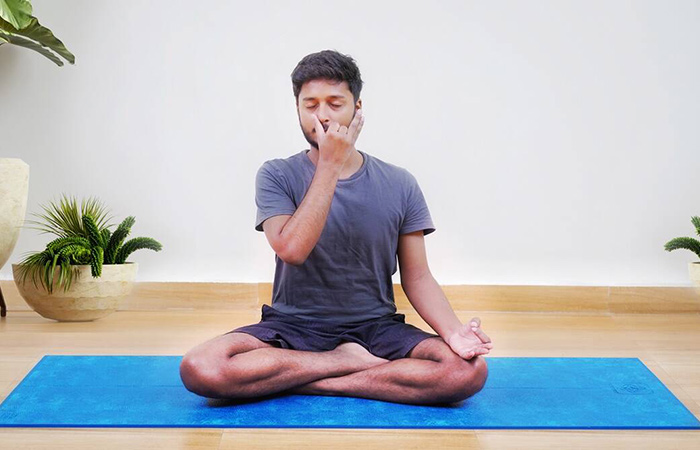
Yoga, an ancient practice that originated in India, has gained immense popularity worldwide for its numerous physical, mental, and spiritual benefits. As yoga continues to grow in popularity, so does the importance of having the right equipment to support and enhance the practice. One such essential tool is the yoga mat. Often overlooked, the yoga mat serves as the foundation for a mindful and transformative practice. In this article, we will delve into the significance of the yoga mat, exploring its physical and psychological benefits, the importance of quality and sustainability, and the role it plays in creating a sacred space for self-discovery and connection.
Physical Benefits
The yoga mat serves as a protective barrier between the body and the ground, providing numerous physical benefits during yoga practice. Firstly, it offers stability and traction, allowing practitioners to maintain proper alignment and balance in various poses. The grip provided by a good-quality yoga mat prevents slipping, reducing the risk of injuries and enhancing overall safety.
Secondly, the cushioning provided by the mat absorbs impact and minimizes stress on the joints, ensuring a comfortable practice. It allows practitioners to perform poses that involve kneeling, sitting, or lying down without discomfort or strain. Furthermore, the mat's thickness and density provide a supportive surface for standing poses, enabling better weight distribution and reducing the strain on the feet and ankles.
Moreover, the yoga mat acts as a hygienic barrier between the practitioner and the floor. It prevents direct contact with germs, dirt, and moisture, making it a convenient and clean surface for practice, especially in shared spaces like studios or gyms. Regular cleaning and maintenance of the mat are crucial to maintain its hygienic properties.
Psychological Benefits
Beyond the physical advantages, the yoga mat also holds significant psychological benefits. The simple act of unrolling the mat signals the beginning of a dedicated time for self-care, introspection, and mindfulness. It becomes a personal space for introspection, allowing practitioners to disconnect from the external world and turn inward, creating an environment conducive to mental focus and self-reflection.
The delineated boundaries of the mat establish a psychological boundary, creating a safe and non-judgmental space for exploration and self-expression. It provides a sense of containment and security, allowing practitioners to push their limits, explore new postures, and challenge their beliefs or fears without fear of judgment.
Furthermore, the yoga mat serves as a visual representation of commitment to the practice. Seeing the mat laid out serves as a reminder and encouragement to show up consistently and engage in a regular practice, strengthening discipline and dedication.
Quality and Sustainability
Selecting a high-quality yoga mat is vital for reaping the full benefits of a yoga practice. A well-constructed mat offers durability, ensuring it can withstand the demands of regular use without wearing out or losing its supportive properties. High-quality materials provide longevity and prevent the need for frequent replacements, contributing to a more sustainable practice.
Considering the environmental impact of yoga mats is also crucial. Opting for eco-friendly materials, such as natural rubber or sustainably sourced materials, minimizes the negative ecological footprint. Many companies now offer mats made from recycled materials or renewable resources, reducing waste and promoting a greener approach to yoga.
Additionally, the choice of a non-toxic mat is important for the practitioner's health. Some conventional mats contain harmful chemicals like PVC, phthalates, and latex, which can be absorbed through the skin during practice. Opting for mats made from natural, non-toxic materials reduces the risk of exposure to these substances, promoting a healthier and safer practice.
Creating a Sacred Space
The yoga mat becomes a sacred space where practitioners can cultivate a deeper connection with themselves and their practice. By dedicating a specific area solely for yoga, practitioners signal their intention to engage in a focused and mindful practice, creating a dedicated space that supports and enhances their experience.
Personalizing the mat, through colors, patterns, or symbols, can infuse it with personal meaning, fostering a sense of connection and inspiration. This individual touch creates an environment that resonates with the practitioner's energy and facilitates a deeper sense of connection.
In the realm of yoga, the importance of a yoga mat should not be underestimated. It provides stability, safety, and comfort during physical practice while serving as a psychological anchor for mindfulness and introspection. Choosing a high-quality, sustainable mat ensures longevity and reduces environmental impact, promoting a greener approach to yoga. Creating a sacred space with the yoga mat enhances the connection to one's practice, fostering self-discovery and self-expression.
As yoga continues to transcend boundaries and touch lives worldwide, the yoga mat remains an essential tool that supports practitioners on their journey towards physical well-being, mental clarity, and spiritual growth. By recognizing the significance of the yoga mat and investing in a high-quality, sustainable option, practitioners can elevate their practice, create a safe and sacred space, and embrace the transformative power of yoga.
Established in 2013, FamilyNeeds.net is connected to your lifestyle and everyday life. Publish reviews of your life, style, fashion and essentials.